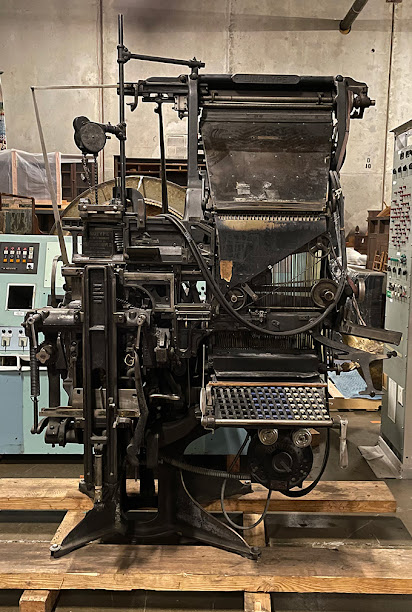Out in the composing room
My days as a newspaper reporter were relatively brief, and they ended about 47 years ago. But the sights, sounds, and even the smells of the newsroom I worked in are indelibly etched in my gray matter. Once in a while I'm back there in a dream.
And so it was with a pang of nostalgia that I came upon this blog post from the Oregon Historical Society. They have taken custody of a linotype machine, the kind that produced the metal "slugs" on which us writers' precious copy was assembled and printed. The machines did so by molding hot metal (lead, I would think) into the desired shapes, one line at a time. This particular contraption got its start a century ago at the Oregonian.
I remember the guys who used to assemble the pages using the slugs. They worked in the "composing room," which was essentially a dark factory with a tiny cubicle of an office in one corner. Salty old characters, the composing room guys knew how to read everything upside down and in mirror images, because that's how the heavy metal pages looked as they put them together. They were also hardy souls, wearing headphones to block the sound of the presses downstairs, which in the composing room could get literally deafening.
There wasn't much reason for me to go through the doors that connected the newsroom to the composing room – our typewritten copy was sent out there via a pneumatic tube. There was only one assistant editor whose job it was to run back and forth, a liaison between two different worlds. But once in a while a boss would send me out there for some errand or other. The old timers seemed quite amused by my earnest 18-year-old self.
Between my desk and the door were the reporters of the women's section. Oh, boy. You could forgive a young man for getting distracted and forgetting where he was going.
Out in the composing room, there were vats of hot metal somewhere, and although I never got near enough to see them, you could smell them. It smelled kind of like hot motor oil.
I wonder what they do these days in the space that used to be the composing room. It ain't composing, that's for sure. I'm sure I wouldn't recognize it.
Anyway, in my day, the linotype machines were still going strong, but something called "cold type" was waiting in the wings to replace them.
Here in 2022, the museum is tickled to have this monstrosity in its collection. As well they should be. "Imagine the headlines printed by this machine!” the curators exclaim. Indeed.



During my early days at the Oregonian some of my coworkers were caught molding fishing weights from the molten lead. Can we assume most of the room workers died early from lead poisoning?
ReplyDelete